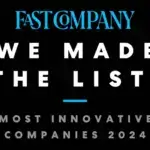
This article was originally published in the June issue of the Journal of Environmental Health, a publication produced by the National Environmental Health Association (NEHA).
Editor’s Note: A need exists within environmental health agencies to increase their capacity to perform in an environment of diminishing resources. With limited resources and increasing demands, we need to seek new approaches to the business of environmental health.
Acutely aware of these challenges, NEHA has initiated a partnership with Accela called Building Capacity. Building Capacity is a joint effort to educate, reinforce, and build upon successes within the profession, using technology to improve efficiency and extend the impact of environmental health agencies.
The Journal is pleased to publish this bi-monthly column from Accela that will provide readers with insight into the Building Capacity initiative, as well as be a conduit for fostering the capacity building of environmental health agencies across the country.
The conclusions of this column are those of the author(s) and do not necessarily represent the views of NEHA.
Darryl Booth is senior vice president and general manager of environmental health at Accela and has been monitoring regulatory and data tracking needs of agencies across the U.S. for almost 20 years. He serves as technical advisor to NEHA’s informatics and technology section.
As a young professional working for a software company and new to environmental health, my boss asked me to exhibit at the National Environmental Health Association’s Annual Educational Conference (AEC) & Exhibition. I was anxious and had no idea what to expect. My boss kindly spent some time to describe the event, the exhibition floor, and what to expect. I remember him telling me, “and there’s always this guy who sells gadgets, mirrors, thermometers, flashlights, black lights, etc.” Gadgets! Who doesn’t love gadgets?
For more than 20 years, I’ve reflected on those early days as I’ve prepared for each AEC and regional conference. And more often than not, I’ve found that table with the red tablecloth that is crowded to the edge with stainless steel devices. It’s a perennial favorite and always worth a look.
While LED flashlights and thermal probes are standard fare, there’s continued enthusiasm for new digital gadgets.
Must-Have Digital Gadgets
Your mobile phone, for example, is now an indispensable device for communications, navigation, photos, video, quick research, and access to a myriad of cloud-based systems. For most inspectors, a tablet computer (or laptop) is also essential to capture inspection results in real time, provide canned content (e.g., standard comments), and deliver a professional report to your operator.
Your “mobile office” might also include a Wi-Fi hot spot or even a portable printer.
Compelling Digital Gadgets
Next, we have the gadgets that prompt us to seek new efficiencies and conveniences. These gadgets might not be commonplace, but they are defensible additions.
On a regular basis I am asked about connected thermal probes, and more specifically, thermal probes with a wireless interface to inspection software that can enable an inspector to move quickly down the line and see each measurement automatically recorded. The hardware and wireless connection are commonplace — just Google it — but we still lack a universally accepted data format and transfer standard. Each vendor has its own approach. So, your software vendor or internal information technology department will still have to finish the job and commit to a specific device.
In some regions, dependent upon food codes and policies, a physical inspection report is delivered to retail food operators. It’s commonplace for inspectors to carry with them one of the low-cost portable printers currently on the market. These printers are relatively lightweight, battery powered, rechargeable, and wireless. Unfortunately, the portable printer often stays in the car until the end of the inspection. And carrying the consumables (e.g., special paper) is enough to make many jurisdictions opt to deliver inspection reports as PDFs via e-mail.
Both delivery methods have their devotees. At least one large jurisdiction offers a hybrid. Good inspection findings are sent to operators via e-mail (with copies sent to corporate), while more serious findings are printed and handed to the operator (in addition to the e-mail).
While relying on public Wi-Fi might seem the way to go, most inspectors benefit from built-in connectivity, a mobile Wi-Fi hot spot, or permission to use their phone as a hot spot. This technology is a game changer. With access to the Internet and your cloud data, information moves bidirectionally in a regular, even flow.
Gadgets With Promise
For hunt-and-peck typists, speech-to-text is alluring. The suggestion that one could dictate inspection findings and relevant notes hands-free feels like an ideal arrangement. In a controlled pilot it can work, and it’s getting better all the time. Experience and anecdotal evidence have confirmed, however, that inspectors will spend more time tweaking the transcription than they would have saved by avoiding the typing. Today, strict but improving command syntax, coupled with loud work environments and imperfect microphones, make this technology a promising but “not quite there” option.
Video will be a game changer one day soon. Video recordings once produced unwieldy and large files that were unsearchable and difficult to store and transfer. Driven by consumer applications, video is increasingly being generated and stored in the cloud in real time. YouTube, a cloud-based system for receiving, storing, and delivering video, now receives and processes 300 hours of new video every minute!
Google and other providers have invested in automated processes that can transcribe audio content, as well as identify common objects (e.g., a cook surface versus a bathroom fixture), thus making the video searchable by text. Law enforcement can already identify faces from video feeds. Can you imagine how your focus will change when you’re wearing a Google Glass or body camera at all times during an inspection? Everything observed becomes a matter of record, making inspector observations automatic and instantly recorded.
This section could go on for pages. Just consider how self-driving cars will impact the field inspector’s workday. Then, contemplate how this technology will impact the supply chain, lowering costs and introducing real- time monitoring. It’s easy (and fun) to get starry eyed about the future.
How Long Must We Wait?
If environmental health was the only industry pressing for the technology, it could take a very long time. Fortunate for us, the future state is being pushed today by consumers (representing huge financial drivers) and businesses, each seeking gains in personal convenience and reduced costs. In my career, constant Internet access has gone from a theory (remember your bag phone) to an inexpensive reality. In the coming decade, ubiquitous access to cloud-based technology and artificial intelligence will be our new reality.


